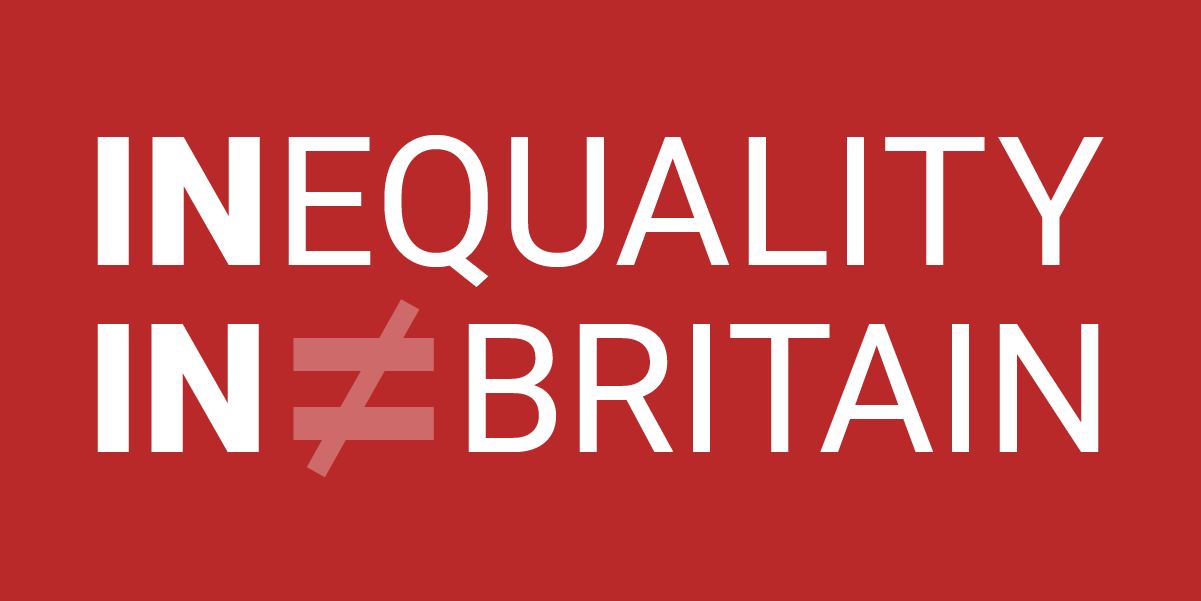- Chronic “underemployment” is slowly replacing the role outright joblessness used to play in the labour market, new stats from the ONS suggest. There has been a 400% increase in the number of people on zero-hours contracts since 2002. One million people in part-time work can’t find full-time jobs. There are now twice as many “underemployed” workers as unemployed workers. Underemployment has increased since 2002, while unemployment has declined.
LONDON – The Office for National Statistics has released a new breakdown of unemployment in the UK, alongside numbers for workers on zero-hours contracts.
The official rate of unemployment is 4.3% of all workers, or 1.46 million people. That is a historic low not seen since 1975, according to the ONS. Normally it would be cause for celebration.
But the percentage of workers who want more hours, or part-time workers who want better jobs, is nearly double the unemployment rate, at about 9.7%, or 3.3 million people, according to the ONS.
Since 2002, the number of insecure, part-time, and under-paid jobs has increased, according to the ONS, while official unemployment has declined to almost negligible levels – technically now below the level of full employment.
The stats thus suggest that chronic “underemployment” is slowly replacing the role outright joblessness used to play in the labour market, and that a major source of inequality in Britain today is not the traditional plight of those on the dole, but the divide between those in full-time jobs and workers stuck in poorly paid, part-time gigs.
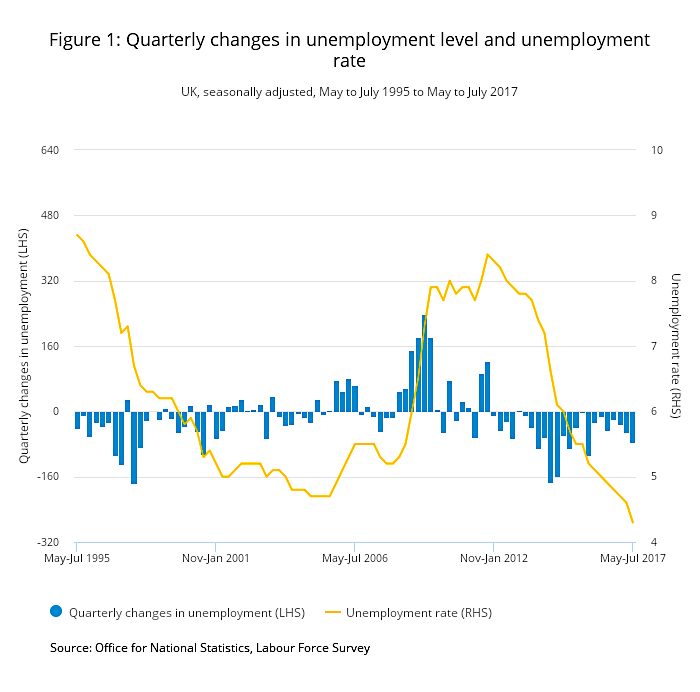
The ONS said that the nature of work in Britain has changed. The stereotype of a 40-hour-a-week, full-time job is increasingly a fiction when viewed from the perspective of the 8.5 million people that the ONS says are in part-time work.
Work is now increasingly skewed toward part-time, gig economy, or "zero-hours contract" jobs. Those types of jobs are in some cases replacing official "unemployment."
The new data supports the argument that official "unemployment" stats in the UK essentially disguise what real-life unemployment actually looks like in Britain today. In reality, the percentage of workers who are either unemployed or underemployed is at least double, and on some measures three times as great, as the "official" rate.
The slippage between the numbers comes from the varying ways in which the ONS defines the "unemployed," and distinguishes them from "underemployed" workers. Broadly, "employed" people are those in traditional full-time work. "Unemployed" people are those without any job whatsoever, but who want work.
Those two definitions do not include the large group of people between them: The "underemployed," those who have part-time jobs, or jobs that are so poorly paid they would like to work extra hours even if they are already working full-time, according to the ONS's definitions.

Here are the new numbers, broken down by the different ONS definitions:
- "Unemployed": 1.46 million, or 4.3%. (This is the official rate, used most in the media.) "Underemployed" workers who "want more hours": 3.3 million, or 9.7% "Underemployed" workers, official definition: 2.5 million, 7.7%. "Underemployed" workers who "wanted more hours in their current job": 1.9 million. "Involuntary unemployed part-time workers": one million. People on "zero-hours contracts": 883,000.
The ONS does not make it clear which categories overlap and which exclude each other. But this chart shows them side by side. Crucially, it shows that while "unemployment" (the solid yellow line) has gone down since 2002, "underemployment" is now higher, especially in the "wants more hours" categories:
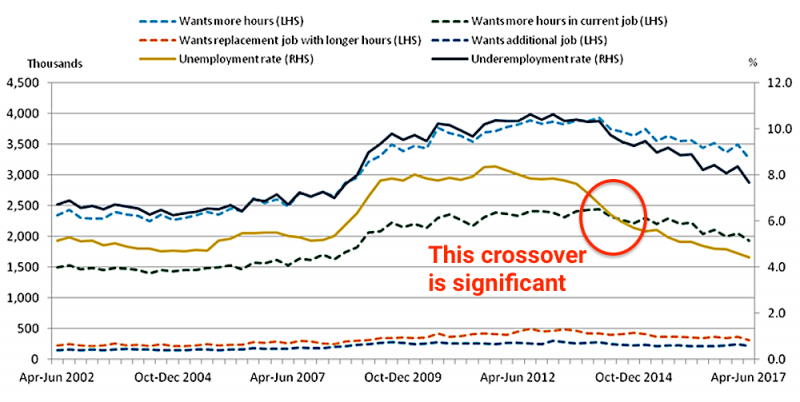
And the number of people who want to work more hours in their current job is now greater than total official unemployment.
Historically, unemployment and underemployment moved in parallel. Most jobs were traditional full-time occupations in which people worked 40 hours a week. But that world has been replaced by companies like Sports Direct, Deliveroo, and Uber, which use armies of part-timers, zero-hours contract workers, or freelancers, who are not guaranteed work on a day-to-day basis.
The ONS says that job growth in full-time employment is now outstripped by job growth in unpredictable, temporary, part-time, zero-hours, gig economy type jobs:
- UK job growth from June/July 2000 to June/July 2017, by type:Full-time employment: 12.3% Self-employed: 47.6% Part-time: 15.1%. Temporary agency workers: 14.4% . Zero-hours contracts: roughly 400%.
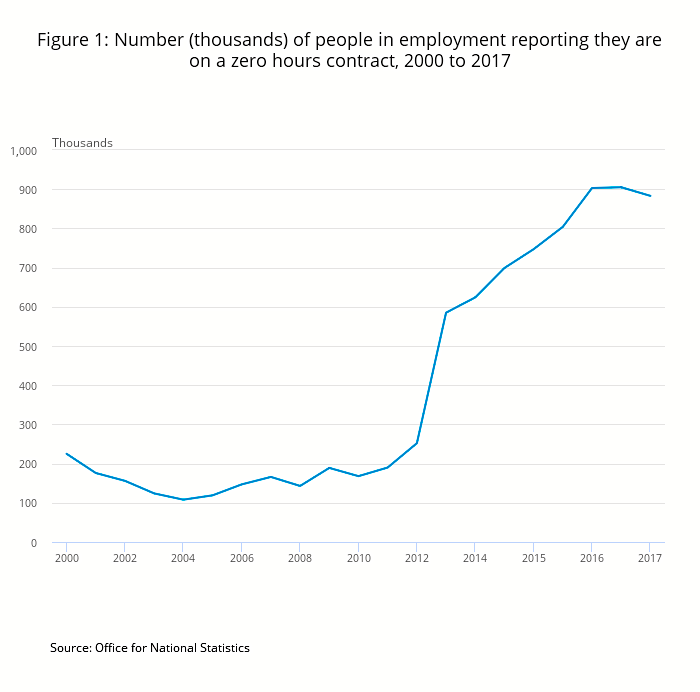
"During the past 17 years there has been a shift towards more non-traditional pattern of work (that is, self employed, agency workers and zero hour contracts)," the ONS says.
Another way of expressing that trend is to say that the reason we have low "unemployment" is because outright joblessness has been replaced by chronic "underemployment."
The ONS's current breakdown of why people remain in part-time jobs looks like this:
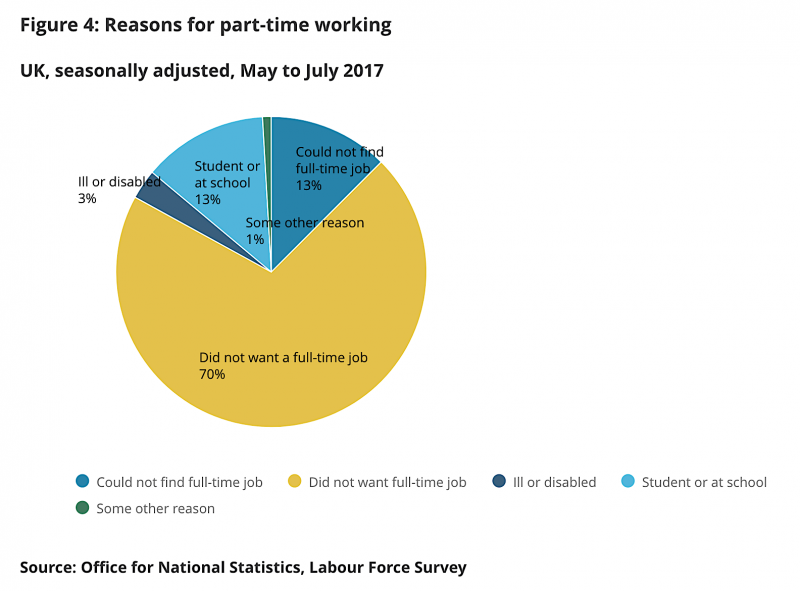
The chart shows that 13% of part-time workers are people who could not find a full-time job. That section on its own represents one million workers, the ONS says. That's the equivalent of an additional two-thirds on top of all the officially "unemployed" people.
A much larger portion - 70% of part-time workers- are classified as not wanting more work. Historically, economists have largely ignored this type of underemployed worker. But with jobs growing fastest in the worst types of work - gig economy or zero hours contracts - it is perhaps time to reconsider why so many part-time workers seemingly don't want full-time work.
Given the growth of zero-hours contracts and other insecure jobs, perhaps the prospect of working more doesn't seem worth it.

